
Willem van Mieris was an 18th-century painter from the Dutch Republic.

Andries Both, was a Dutch genre painter. He was part of the group of Dutch and Flemish genre painters active in Rome in the 17th century known as the bamboccianti, who painted scenes from the everyday life of the lower classes in Rome and its countryside.
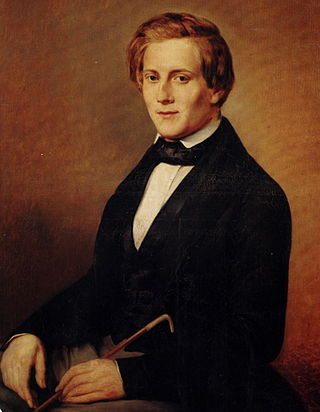
Mathieu Kessels was a Dutch Neoclassical sculptor who mainly worked in Rome.

Jean-Baptiste Tuby was a French sculptor of Italian origins, best known for the sculpture in the fountains of the Gardens of Versailles. His work expresses the exuberance of the Baroque blended with the classicism of the Louis XIV style.
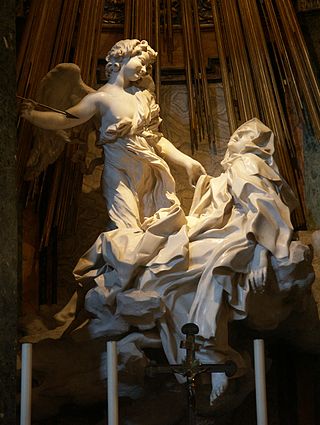
Baroque sculpture is the sculpture associated with the Baroque style of the period between the early 17th and mid 18th centuries. In Baroque sculpture, groups of figures assumed new importance, and there was a dynamic movement and energy of human forms—they spiralled around an empty central vortex, or reached outwards into the surrounding space. Baroque sculpture often had multiple ideal viewing angles, and reflected a general continuation of the Renaissance move away from the relief to sculpture created in the round, and designed to be placed in the middle of a large space—elaborate fountains such as Gian Lorenzo Bernini‘s Fontana dei Quattro Fiumi, or those in the Gardens of Versailles were a Baroque speciality. The Baroque style was perfectly suited to sculpture, with Bernini the dominating figure of the age in works such as The Ecstasy of St Theresa (1647–1652). Much Baroque sculpture added extra-sculptural elements, for example, concealed lighting, or water fountains, or fused sculpture and architecture to create a transformative experience for the viewer. Artists saw themselves as in the classical tradition, but admired Hellenistic and later Roman sculpture, rather than that of the more "Classical" periods as they are seen today.

Artus Quellinus the Elder, Artus Quellinus I or Artus (Arnoldus) Quellijn was a Flemish sculptor. He is regarded as the most important representative of the Baroque in sculpture in the Southern Netherlands. He worked for a long period in the Dutch Republic and operated large workshops both in Antwerp and Amsterdam. His work had a major influence on the development of sculpture in Northern Europe.
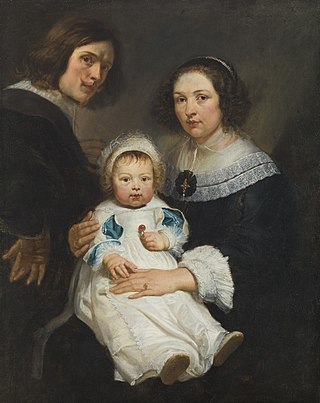
Erasmus Quellinus the Younger or Erasmus Quellinus II was a Flemish painter, engraver, draughtsman and tapestry designer who worked in various genres including history, portrait, allegorical, battle and animal paintings. He was a pupil of Peter Paul Rubens and one of the closest collaborators of Rubens in the 1630s. Following Rubens' death in 1640 he became one of the most successful painters in Flanders. He was a prolific draughtsman who made designs for decorative programmes in the context of official celebrations, for publications by the local publishers and for tapestries and sculptures realised by the local workshops. His work reveals the Classicist trend in the Baroque.

Rombout Verhulst was a Flemish sculptor and draughtsman who spent most of his career in the Dutch Republic. An independent assistant of the Flemish sculptor Artus Quellinus the Elder in the sculptural decoration project for the new town hall in Amsterdam, he contributed to the spread of the Baroque style in Dutch sculpture. He became the leading sculptor of marble monuments, including funerary monuments, garden figures and portraits, in the Dutch Republic.
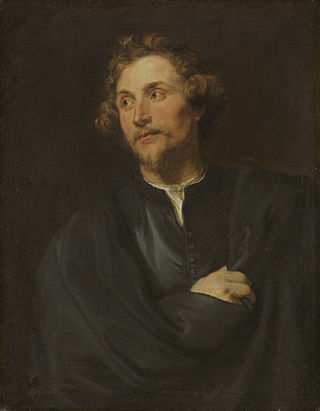
Georg Petel or Jorg Petel was a German sculptor and a virtuoso ivory carver. His work marks the beginning of Baroque sculpture in Germany.

Louis Royer, also Lodewyk Royer, was a Flemish sculptor who worked in the Netherlands where he received many commissions from the royal family and for public statues.

Laurent Delvaux was a Flemish sculptor. After a successful international career that brought him to London and Rome, he returned to the Austrian Netherlands where he was a sculptor to the court. Delvaux was a transitional figure between the Baroque and Neo-classicism.
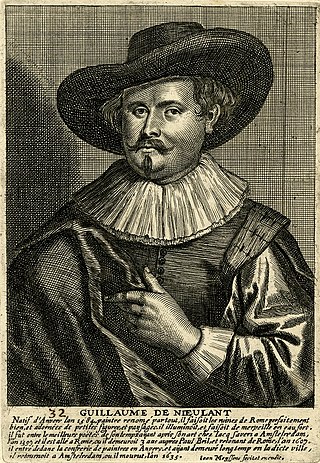
Guilliam or Willem van Nieulandt or van Nieuwelandt (1582/84–1635) was a Flemish painter, engraver, poet and playwright from Antwerp. He spent two thirds of his career in the Habsburg Netherlands and the remainder in Italy and the Dutch Republic. He is known for his Italianate landscape paintings and prints, often real views or capricci of landscapes and buildings from in or around Rome enlivened by contemporary figures or biblical or mythological scenes. He is regarded as the principal poet and playwright active in the Habsburg Netherlands in the first three decades of the 17th century.

Jan Baptist Xavery was a Flemish sculptor principally active in the Dutch Republic. He produced portrait busts, large scale statues for residences and gardens, church furniture, wall decorations, tomb monuments as well as small scale statuettes in boxwood, lime wood, ivory and terracotta. The latter were made for elite collectors who liked to admire such objects in the privacy of their homes. He worked on various projects for William IV of Orange-Nassau, the Prince of Orange who later became the Stadtholder. He is regarded as the leading sculptor active in the Dutch Republic in the first half if the 18th century.
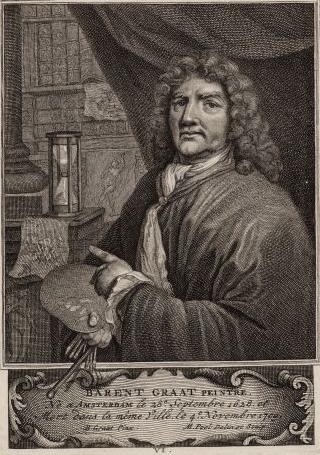
Barend Graat, was a Dutch painter of history- and altarpieces, landscapes and portraits in the Golden Age. He is also known as a printmaker and draughtsman.

Matthijs Pool (1676–1740) was an engraver from the Dutch Republic.

Johannes van Mildert or Hans van Mildert was a Flemish sculptor, who is best known for his baroque sculptures found in many Belgian and Dutch churches. Van Mildert played an important role in the development of the design of Flemish Baroque religious furniture.

Rombaut Pauwels or Rombout Pauwels was a Flemish architect and sculptor who worked in a moderate Baroque style. Rombaut Pauwels was active mainly in his hometown Mechelen and in Ghent.
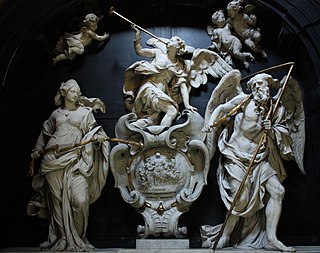
Mattheus van Beveren was a Flemish sculptor and medalist who is mainly known for his monumental Baroque church sculptures and small wood and ivory sculptures. He also made medals and die designs for the Antwerp Mint.

Bartholomeus Eggers was a Flemish sculptor, who after training in his hometown Antwerp spent most of his active career in the Dutch Republic. Here he initially collaborated with other Flemish sculptors on the sculptural decorations for the new city hall in Amsterdam, a project which was under the direction of Artus Quellinus the Elder. He worked on various public projects and on commissions for leading courts in Europe. He is known for his portraits, funerary sculptures, reliefs, statues of children and allegorical, biblical and mythological sculptures. He was, together with Artus Quellinus the Elder and Rombout Verhulst, one of the leading sculptors active in the Dutch Republic in the second half of the 17th century.

Albert Xavery, Albert Saverij or Albertus Xavery was a Flemish sculptor principally active in Antwerp. He produced mainly statues of mythological figures, some of them on a large scale, made to be displayed in luxurious residences or in gardens. Like other Antwerp sculptors, he exported many of his works to the Dutch Republic, where his patrons included members of the House of Nassau.

























